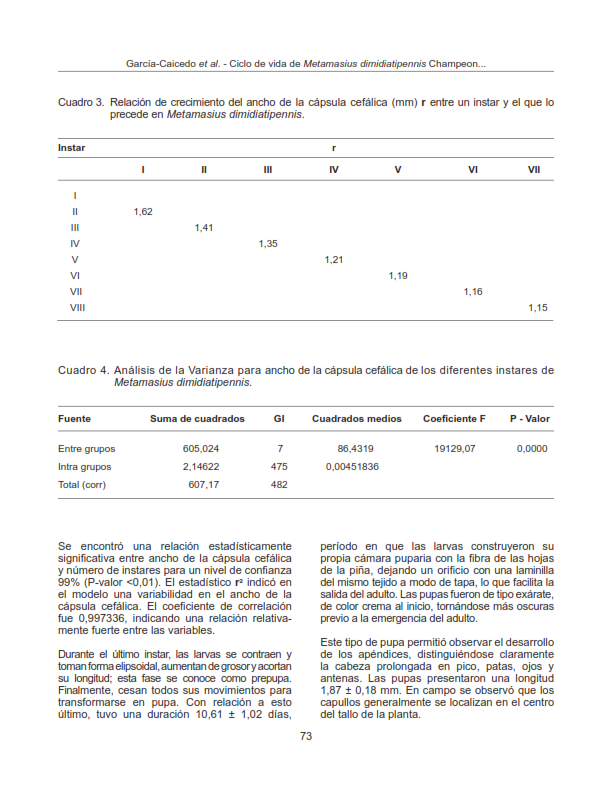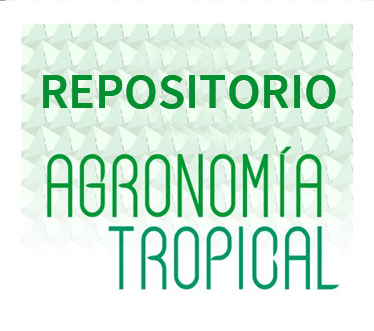Life cycle of Metamasius dimidiatipennis Champeon (Coleoptera: Curculionidae) under laboratory conditions
Abstract
The pineapple weevil Metamasius dimidiatipennis Champeon (Coleoptera: Curculionidae) is considered one of the most important insect pest of pineapple in the Táchira state. This study, was determined the life cycle of this insect in the Entomology laboratory at the National Institute of Agricultural Research in Táchira (INIA-TÁCHIRA) at a temperature of 21.87 °C, and a relative humidity 79.27%. The insects used in this study were grown in the Lab and were fed with pineapple leaves. The duration of the life cycle from the egg stage to the adult emergence was 82.34 ± 0.47 days. The duration of the different stages was, egg: 6 ± 0.25 days, larva: 50.59 ± 0.36 days and pupa: 10.61 ± 0.36 days. The process of melanization for the adult lasted 14.67 ± 0.26 days. The average number of eggs per female was 7, with 92% of fertility. Eight well-defined larval instars were identified according to Dyar's Law, for changing each stadium required averaged 6 days. Adults of both sexes presented two colors, some with red pronotum and others with the pronotum entirely black. Adult males have a length of 1.88 ± 0.11 cm and females 1.95 ± 0.12 cm. The adult longevity was 319.4 ± 37.20 days.
Downloads
References
• Gaines, J. C. and F. L. Campbell. 1935. Dyar's rule as related to the number of instars of the corn earworm Heliothis obsoleta (Fab.) collected in the field. Ann. Entomol. Society of America.18(445-461).
• Giraldo-Vanegas, H. 1998. La Mosca de la Piña Melanoloma viatrix. In: Curso Manejo agronómico de la piña. Hato de la virgen Capacho Libertad. Manual técnico Fonaiap- Dainco. 66.
• Giraldo-Vanegas, H. y J. L. García. 1992. Determinación del número de instares de Eiphosoma vitticolle Cresson (Hymenoptera : Ichneumonidae). Bol. Entomol. Venez. N.S. 7(2):133-137.
• Panamá, C. 2003. Seminario sobre Producción y Manejo Post Cosecha de La Piña para la exportación. Manual Técnico. Disponible en línea: https://bit.ly/3b4C3jY
• Rodríguez, M., J. Valdez, J. Vera y A. Castillo. 2000. Identificación de ínstares larvales de Zabrotes subfasciatus (BOH.) (Coleoptera: Bruchidae) mediante las dimensiones de sus cápsulas cefálicas. Agrociencia. 1(34):83-90.
• Vargas, E. 2011. Guía para la identificación y manejo integrado de plagas en piña. Disponible en línea: https://bit.ly/3dgfivd





